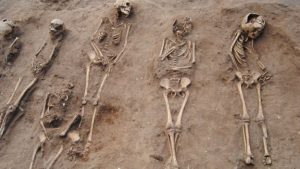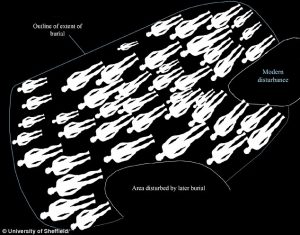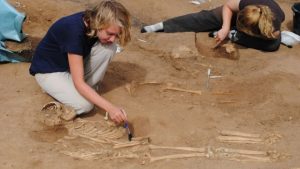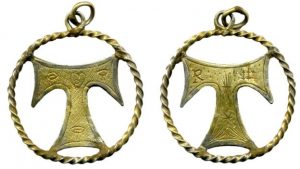Excavations near near Immingham in Lincolnshire, United Kingdom, revealed a mass burial pit of victims of the Black Death pandemic. Carbon dating shows that the skeletons come from 14th century while DNA tests confirmed presence of the plague bacteria.

The burial ground was discovered by archaeologists from the University of Sheffield who were researching the site of Thornton Abbey for evidence of a post-medieval building. The building at Thornton was once one of the country’s biggest medieval abbeys. Instead the researchers found a grave containing 48 skeletons, 27 of them children.

Additional laboratory methods were applied in order to precisely date the skeletons and confirm the presumed cause of death. Carbon dating showed that the remains date to the middle of the 14th century, when the Black Death killed an estimated 75-200 million people across Europe and Asia. Teeth samples were studied for DNA and they managed to test positive for Yersinia pestis, the bacterium responsible for the plague.

The bacteria, Yersinia pestis, has only previously been identified at two 14th-century sites, both cemeteries in London. According to the experts, the finding of a previously unknown and completely unexpected mass burial dating to this period in a quiet corner of rural Lincolnshire is thus far unique, and sheds light into the real difficulties faced by a small community ill-prepared to face such a devastating threat like the plague.

The researchers state that mass burials are a signal of when the system has broken down and this community in Lincolnshire had obviously reached a point where it could not cope. The skeletons were carefully laid out in rows to make efficient use of space. They included men, women and children it was clear they were not from the abbey but possibly from a monastery hospital believed to have also been on the site. By one of the individuals a pendant in shape of a Tau Cross was found, supposedly warn to ward off illness.

The researchers hope that further analysis will reveal whether any of the people in the pit were related, what they did for a living and their diet, the latter through isotope analysis. The placement of some of the children overlapping adults indicates that there may have been family members.

(after BBC News, University of Sheffield, The Guardian & Daily Mail Online)